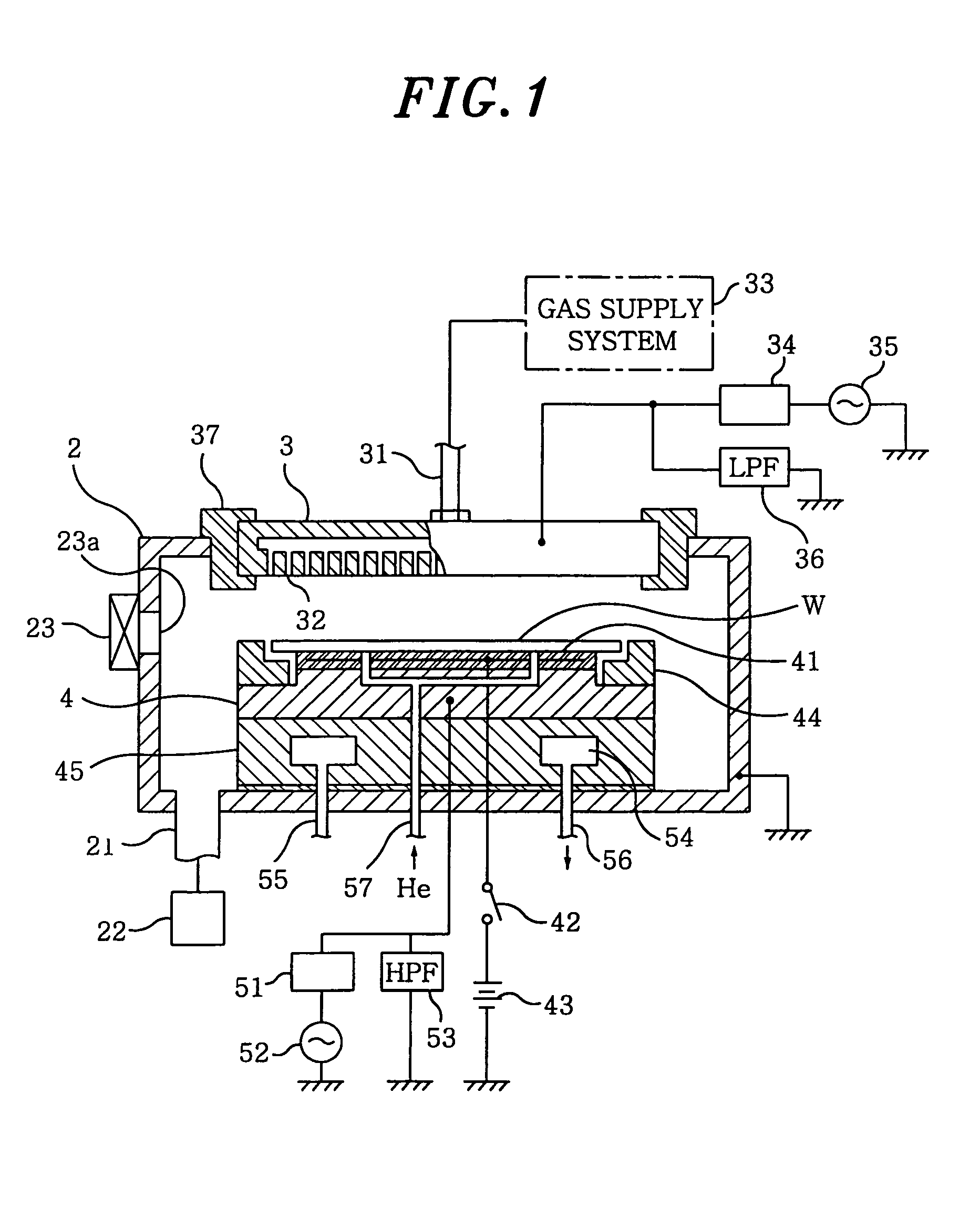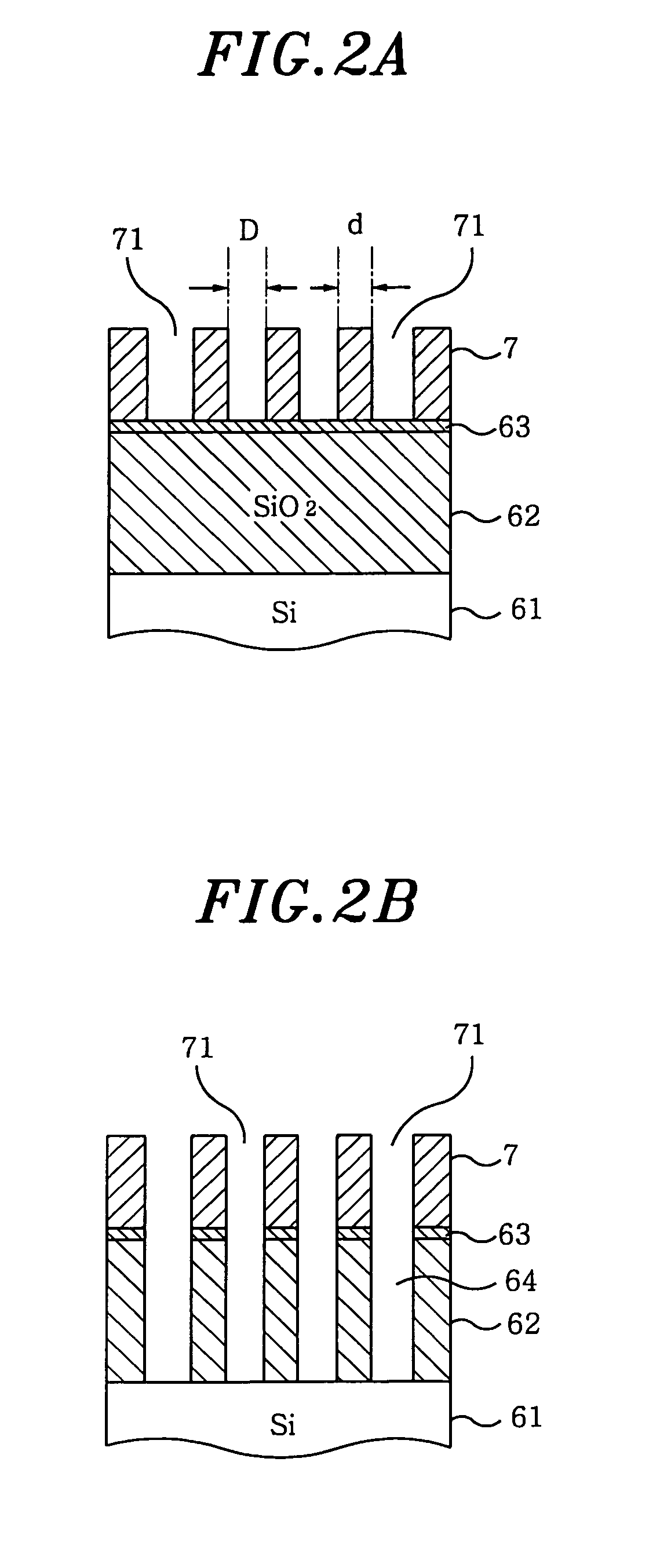Plasma etching method
a technology of etching and plasma, which is applied in the direction of chemistry apparatus and processes, electric discharge tubes, semiconductor devices, etc., can solve the problems of reducing yield in both cases, new problems may occur, and so as to reduce striation at etched portions, improve processing shape, and suppress the effect of widening an upper portion of a recess
- Summary
- Abstract
- Description
- Claims
- Application Information
AI Technical Summary
Benefits of technology
Problems solved by technology
Method used
Image
Examples
example 1-1
B. EXAMPLE 1-1
[0066] Under the above processing conditions, the flow rates of Ar and Xe were set to be 1250 sccm and 150 sccm, respectively.
example 1-2
C. EXAMPLE 1-2
[0067] Under the above processing conditions, the flow rates of Ar and Xe were set to be 1150 sccm and 250 sccm, respectively.
example 1-3
D. EXAMPLE 1-3
[0068] Under the above processing conditions, the flow rates of Ar and Xe were set to be 1050 sccm and 350 sccm, respectively.
E. EXPERIMENTAL RESULTS
[0069] In each example, the shapes of holes 64 formed on the surface of the SiO2 film 62 were inspected through the use of a SEM (Scanning Electron Microscope) by removing the resist mask 7 after completing an etching of the SiO2 film 62, and a selectivity was obtained from the film thickness of the residual resist mask 7 and the depths of the holes 64 by way of halting the process in the middle of etching the SiO2 film. Further, the etching of the SiO2 film 62 was continued even after reaching a calculated end point, that is, an overetching was conducted.
[0070]FIG. 4 visualizes the experimental results, wherein the drawings are based on the pictures of top surfaces and cross sections obtained by the SEM. From the observation of the pictures, it can be found that the shapes of the holes 64 were poor in case of using the...
PUM
 Login to View More
Login to View More Abstract
Description
Claims
Application Information
 Login to View More
Login to View More - R&D
- Intellectual Property
- Life Sciences
- Materials
- Tech Scout
- Unparalleled Data Quality
- Higher Quality Content
- 60% Fewer Hallucinations
Browse by: Latest US Patents, China's latest patents, Technical Efficacy Thesaurus, Application Domain, Technology Topic, Popular Technical Reports.
© 2025 PatSnap. All rights reserved.Legal|Privacy policy|Modern Slavery Act Transparency Statement|Sitemap|About US| Contact US: help@patsnap.com



